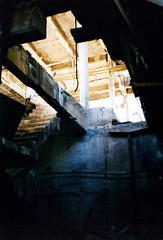I did a lot of reading this summer, partly for pleasure and partly for the graduate class I took (“Curriculum Foundations”, CURR655 at EMU). As I’ve done for the past few years, I’ve been tracking my reading through GoodReads (see my profile on GoodReads).
Here’s the list of what I read this summer:
FICTION
I read a fair bit of fiction this summer. It was nice to have as a counterpoint to the heavy academic stuff I had to read for my classes.
Bloodmoney: A Novel of Espionage
David Ignatius
Body of Lies
David Ignatius
The Salzburg Connection
Helen MacInnes
WWW: Wake (WWW, #1)
Robert J. Sawyer
Cryptonomicon
Neal Stephenson
Kill Decision
Daniel Suarez
Bitter Seeds (Milkweed Triptych, #1)
Ian Tregillis
YOUNG ADULT NON-FICTION
Summer is traditionally a time for me to unwind and read some good YA fiction. This summer, I was busier than usual with other reading, so I only read the Hunger Games series (in a tearing-through-the-pages 2-day stretch that felt like a fever dream – they’re hard to put down, and pretty intense for YA fiction).
The Hunger Games (The Hunger Games, #1)
Suzanne Collins
Catching Fire (The Hunger Games, #2)
Suzanne Collins
Mockingjay (The Hunger Games, #3)
Suzanne Collins
NON-FICTION
This list is actually not entirely comprehensive; I read lots of single chapters from different things during my curriculum class, and that’s not really on this list, only works I finished.
The Process of Education
Jerome Bruner
Jennet Conant
Longest Day: The Classic Epic of D Day
Cornelius Ryan
Curriculum 21: Essential Education For A Changing World
Heidi Hayes Jacobs
Wherever I Wind Up: My Quest for Truth, Authenticity and the Perfect Knuckleball
R.A. Dickey
La Place De La Concorde Suisse
John McPhee
Seizing the enigma: The race to break the German U-boat codes, 1939-1943
David Kahn

